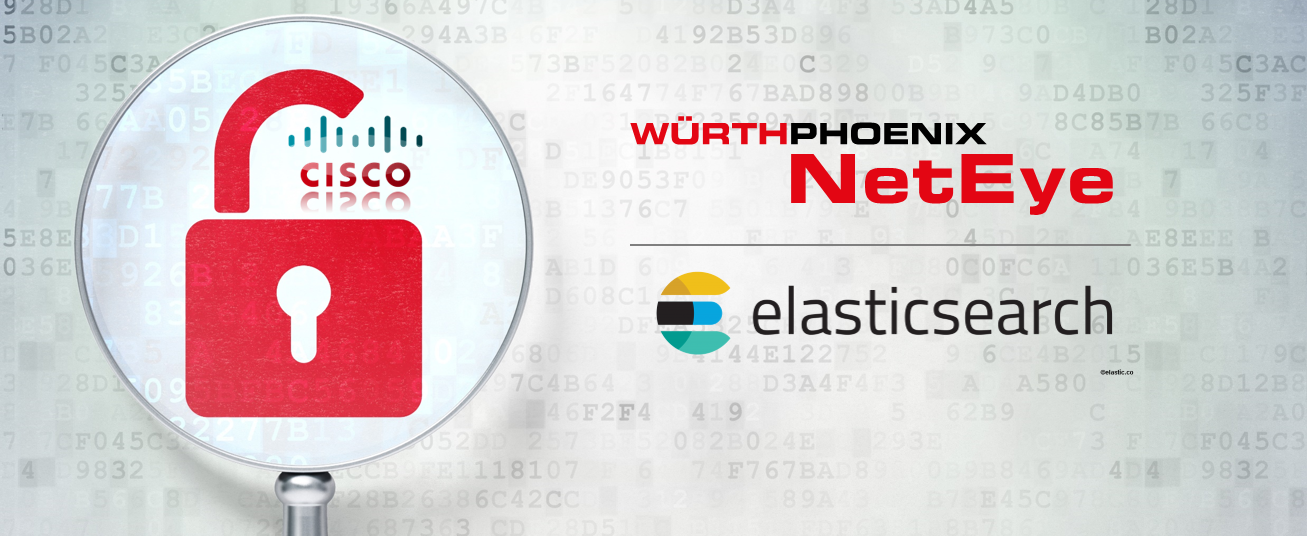
Sie haben eine CISCO Netzwerk Infrastruktur und möchten die Logs über das Syslog Protokol in eine Elasticsearch Datenbank schreiben? Hier erfahren Sie wie das geht mit allen notwendigen Filtern und Pattern für ihre Logstash Funktionalität.
Wie man weiss bekommt man über eine Logstash Instanz Daten in die Elasticsearch Datenbank. Der Vorteil liegt darin diese Daten zu analysieren und in Felder aufzuteilen so dass diese in Elasticsearch indiziert und verwendet werden können. CISCO ist als Netzwerkgeräte Hersteller sehr bekannt und eingesetzt, also ist es wichtig eine Lösung zu haben um die Logs welche ich von diesen Geräten schicken kann richtig zu indizieren.
Dieser Artikel beschäftigt sich grundlegend mit 2 Arten von CISCO Logs:
- Netzwerkgeräte wie Switche oder Router
- Cisco WLC
- Die CISCO Radius Appliance
Das ganze habe ich in 2 filterrule getrennt da die RADIUS logs etwas total anderes sind und mit “normalen” CISCO Logs nichts gemeinsam haben. Also habe ich dafür folgende Pattern benutzt:
CISCOTIMESTAMPTZ %{CISCOTIMESTAMP}( %{TZ})?
NEXUSTIMESTAMP %{YEAR} %{MONTH} %{MONTHDAY} %{TIME}( %{TZ})?
ISETIMESTAMP %{YEAR}-%{MONTHNUM}-%{MONTHDAY}[T ]%{HOUR}:?%{MINUTE}(?::?%{SECOND})? %{ISO8601_TIMEZONE}?
Und dann habe ich folgende Filter Rules geschrieben, die Log Gruppe habe ich verwendet um das parsen auf eine gewisse Gruppe einzuschränken, man kann das auch weglassen wenn man möchte:
#
# FILTER - Try to parse the cisco log format
#
# Configuration:
# clock timezone Europe +1
# no clock summer-time
# ntp server 0.0.0.0 prefer
# ntp server 129.6.15.28
# ntp server 131.107.13.100
# service timestamps log datetime msec show-timezone
# service timestamps debug datetime msec show-timezone
# logging source-interface Loopback0
# ! Two logging servers for redundancy
# logging host 0.0.0.0 transport tcp port 8514
# logging host 0.0.0.0 transport tcp port 8514
# logging trap 6
filter {
# NOTE: The frontend logstash servers set the type of incoming messages.
if [type] == "syslog" and [host_group] == "Netzwerk" {
# Parse the log entry into sections. Cisco doesn't use a consistent log format, unfortunately.
grok {
patterns_dir => "/var/lib/neteye/logstash/etc/pattern.d"
match => [
# IOS
"message", "%{SYSLOGTIMESTAMP:timestamp} %{SYSLOGHOST:logsource} ((%{NUMBER:log_sequence#})?:( %{NUMBER}:)? )?%{CISCOTIMESTAMPTZ:log_date}: %%{CISCO_REASON:facility}-%{INT:severity_level}-%{CISCO_REASON:facility_mnemonic}: %{GREEDYDATA:message}",
"message", "%{SYSLOGTIMESTAMP:timestamp} %{SYSLOGHOST:logsource} ((%{NUMBER:log_sequence#})?:( %{NUMBER}:)? )?%{CISCOTIMESTAMPTZ:log_date}: %%{CISCO_REASON:facility}-%{CISCO_REASON:facility_sub}-%{INT:severity_level}-%{CISCO_REASON:facility_mnemonic}: %{GREEDYDATA:message}",
# Nexus
"message", "%{SYSLOGTIMESTAMP:timestamp} %{SYSLOGHOST:logsource} ((%{NUMBER:log_sequence#})?: )?%{NEXUSTIMESTAMP:log_date}: %%{CISCO_REASON:facility}-%{INT:severity_level}-%{CISCO_REASON:facility_mnemonic}: %{GREEDYDATA:message}",
"message", "%{SYSLOGTIMESTAMP:timestamp} %{SYSLOGHOST:logsource} ((%{NUMBER:log_sequence#})?: )?%{NEXUSTIMESTAMP:log_date}: %%{CISCO_REASON:facility}-%{CISCO_REASON:facility_sub}-%{INT:severity_level}-%{CISCO_REASON:facility_mnemonic}: %{GREEDYDATA:message}",
# WLC
"message", "%{SYSLOGTIMESTAMP:timestamp} %{SYSLOGHOST:logsource} %{SYSLOGHOST:wlc_host}: %{DATA:wlc_action}: %{CISCOTIMESTAMP:log_date}: %{DATA:wlc_mnemonic}: %{DATA:wlc_mnemonic_message} %{GREEDYDATA:message}"
]
overwrite => [ "message" ]
add_tag => [ "cisco" ]
}
}
# If we made it here, the grok was sucessful
if "cisco" in [tags] {
date {
match => [
"log_date",
# IOS
"MMM dd HH:mm:ss.SSS ZZZ",
"MMM dd HH:mm:ss ZZZ",
"MMM dd HH:mm:ss.SSS",
# Nexus
"YYYY MMM dd HH:mm:ss.SSS ZZZ",
"YYYY MMM dd HH:mm:ss ZZZ",
"YYYY MMM dd HH:mm:ss.SSS",
# Hail marry
"ISO8601"
]
}
# Add the log level's name instead of just a number.
mutate {
gsub => [
"severity_level", "0", "0 - Emergency",
"severity_level", "1", "1 - Alert",
"severity_level", "2", "2 - Critical",
"severity_level", "3", "3 - Error",
"severity_level", "4", "4 - Warning",
"severity_level", "5", "5 - Notification",
"severity_level", "6", "6 - Informational"
]
}
} # if
} # filter
Für die CISCO RADIUS LOGS habe ich folgenden Filter verwendet:
#
# FILTER - Try to parse the ise logfiles (Radius)
#
filter {
if [type] == "syslog" and [host_group] == "ISE" {
grok {
patterns_dir => "/var/lib/neteye/logstash/etc/pattern.d"
match => [
"message", "%{SYSLOGTIMESTAMP:timestamp} %{SYSLOGHOST:logsource} %{DATA:ise_log_type} %{NUMBER:ise_log_sequence} %{INT:ise_log_lines_split} %{INT:ise_log_line_sequence} %{ISETIMESTAMP} %{NUMBER:ise_log_number} %{NUMBER:ise_log_id} %{DATA:ise_log_facility} %{DATA:ise_log_id_description},.* Device IP Address=%{IP:ise_device_ip},.* UserName=%{DATA:ise_username},.* NetworkDeviceName=%{DATA:ise_network_device_name},.* User-Name=%{DATA:ise_user_name},.* (NAS-Port-Id=%{DATA:ise_nas_port_id},.* )?(cisco-av-pair=%{DATA:ise_cisco_av_pair},.* )?AuthenticationMethod=%{DATA:ise_authentication_method},.* (AuthenticationStatus=%{DATA:ise_authentication_status}, .*)?(EndPointMACAddress=%{DATA:ise_endpoint_mac_address},.*)? Location=%{DATA:ise_location},%{GREEDYDATA:message}"
]
add_tag => [ "ISE" ]
remove_tag => [ "_grokparsefailure" ]
tag_on_failure => [ "_iseparsefailure" ]
}
}
} # filter
Das ganze zusammengesetzt ergibt nun gut formatierte CISCO Logs in Elasticsearch, mit welchen man dann auch wirklich etwas anfangen kann. Sie können all die oben genannten Dateien von hier (Cisco-Logstash-Elasticsearch) herunterladen.







